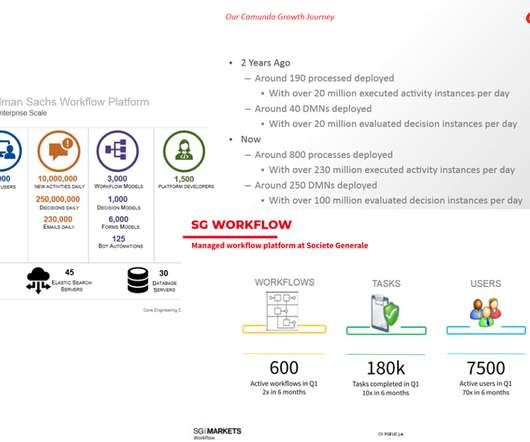From Project to Program: Scaling Camunda Adoption in Your Company
Bernd Rucker
MAY 27, 2020
As part of this project they: evaluated a workflow tool, modeled the workflow, implemented the whole workflow solution, integrated it with their existing user interface, integrated it with their existing SOA infrastructure, exported relevant data into their data warehouse And set it live and operated it. Which brings us to microservices.














Let's personalize your content